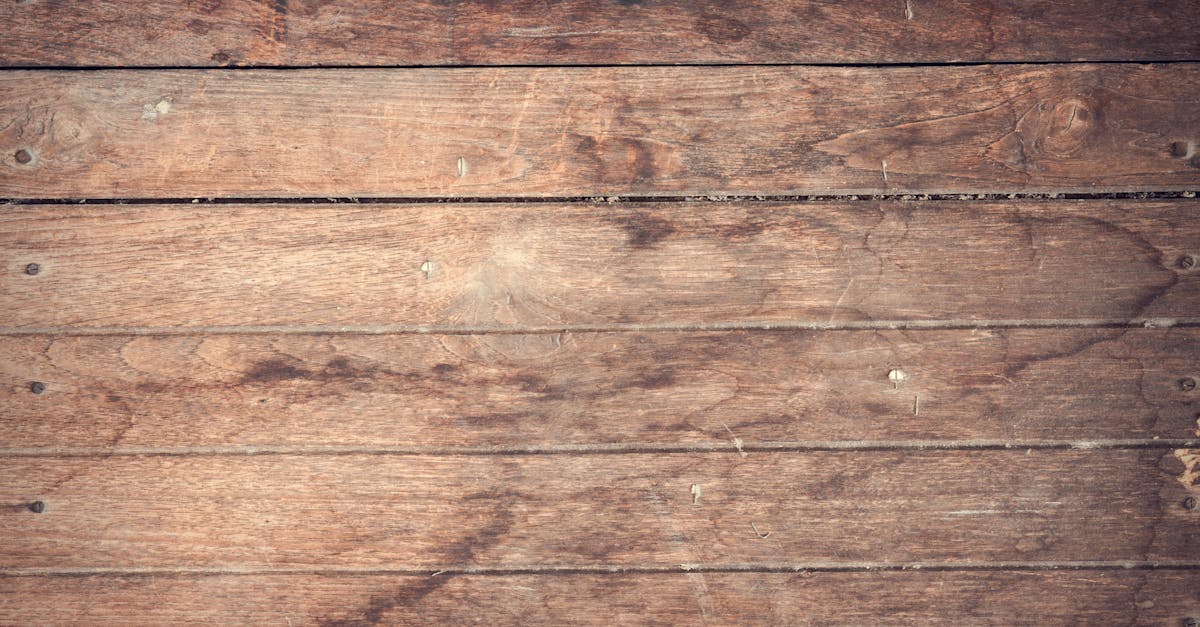
Alternative Floor Care Methods
Alternative floor care methods offer a range of options that can balance aesthetics and maintenance. Some homeowners prefer using sealers or finishes, which can provide a protective layer without the added upkeep associated with floor waxing. These products often enhance the natural appearance of the floor while making it resistant to stains and scratches, allowing for easier cleaning.
Another option is regular mopping with effective cleaning solutions. This simple method can keep floors looking fresh and clean without the need for more intensive treatments like floor waxing. While waxing can provide a temporary shine and protection, maintaining a consistent cleaning routine may fulfill the needs of many households, especially those that prioritize simplicity in their floor care.
Comparing Waxing to Other Floor Maintenance Techniques
Floor waxing has long been a popular choice for maintaining the shine and durability of hard floors. Compared to other techniques like mopping or using cleaning solutions, waxing offers a protective layer that can enhance the lifespan of the flooring. It creates a barrier against stains and scuffs, making it easier to maintain the floor's appearance over time. In contrast, regular mopping can leave surfaces open to wear without the additional benefits that wax provides.
While mopping is essential for day-to-day cleanliness, it often falls short in terms of long-term protection. Options like floor polishing can also serve as alternatives but may not offer the same level of shine or durability as floor waxing. Additionally, some modern cleaning techniques, such as using microfiber pads, have gained popularity for their effectiveness. However, they usually lack the enriched protection that a good coat of wax can provide, highlighting the unique advantages of waxing in maintaining floor integrity.
Cost Considerations
When considering floor waxing as part of a maintenance routine, one must evaluate the associated costs. The price of professional waxing services can vary significantly based on the size of the floor, type of wax used, and the condition of the existing surface. For those opting for a do-it-yourself approach, initial costs for purchasing wax, applicators, and cleaning supplies should be factored into the overall expense.
In addition to the direct costs of materials or services, maintenance frequency must be accounted for. Floor waxing typically requires periodic reapplication to maintain its appearance and protective qualities. This can lead to ongoing expenditures which, over time, may add up, impacting the overall budget for floor care. Understanding these financial implications is crucial for making an informed decision about the longevity and upkeep of floor waxing.
Evaluating the Expenses of Floor Waxing
When evaluating the expenses of floor waxing, one must consider both the short-term and long-term costs involved. Initial expenses may include purchasing wax products, applicators, and cleaning supplies. Additionally, there might be costs associated with hiring professionals if one opts for expert care rather than a DIY approach. Regular maintenance also involves periodic reapplication of wax, which adds to the ongoing expenses over time.
It's essential to assess how floor waxing compares to other maintenance methods financially. While the upfront costs of wax can be significant, longer-lasting protection and fewer repairs may lead to savings in the long run. Moreover, investing in quality products may extend the intervals between wax applications and reduce the frequency of maintenance needed, thereby influencing the overall cost-effectiveness of floor waxing.
Environmental Impact of Floor Wax
The environmental impact of floor wax has become a significant concern as many products used in the waxing process contain chemicals harmful to ecosystems. Conventional floor waxing agents often feature volatile organic compounds (VOCs) that can contribute to air pollution both indoors and outdoors. These substances can compromise air quality, posing health risks and affecting those with sensitivities to chemical exposure.
In recent years, manufacturers have started to develop eco-friendly waxing products that minimize environmental harm. These alternatives often rely on natural ingredients and are formulated to reduce VOC emissions. Choosing greener options in floor waxing not only contributes to a healthier indoor environment but also supports sustainability efforts by decreasing the overall chemical load released into the atmosphere.
EcoFriendly Waxing Products
Eco-friendly waxing products have gained traction as consumers become more aware of the environmental impact associated with traditional floor waxing. These alternatives often utilize natural ingredients that are less harmful to both indoor air quality and the surrounding ecosystem. Many brands have developed wax formulas that avoid toxic chemicals, making them safer for both users and pets. Choosing eco-friendly options can provide a shine to floors while still maintaining a commitment to sustainability.
In addition to being safer for the environment, eco-friendly products can sometimes offer similar longevity and effectiveness as their conventional counterparts. These formulations usually require fewer applications, which can ultimately reduce waste. When selecting a floor waxing solution, it’s beneficial to consider certification labels or endorsements from environmental organizations. Prioritizing these products can lead to healthier indoor spaces without compromising the quality of floor care.
FAQS
Is waxing my floors necessary for maintenance?
Waxing is not strictly necessary, but it can enhance the appearance and protect the surface of your floors, especially if they are made of hardwood, vinyl, or linoleum.
How often should I wax my floors?
The frequency of waxing depends on the type of flooring and the amount of foot traffic it receives. Generally, floors may need to be waxed every 6 to 12 months.
What are the alternatives to waxing floors?
Alternatives to waxing include using floor finishes, polishing, or simply cleaning and maintaining the floors regularly without any wax.
Are there eco-friendly options for floor waxing?
Yes, there are eco-friendly waxing products available that are made from natural ingredients and have low VOC emissions, making them better for the environment.
What are the cost implications of waxing floors?
The cost of waxing floors can vary based on factors like the size of the area, the type of wax used, and whether you choose to do it yourself or hire a professional.
